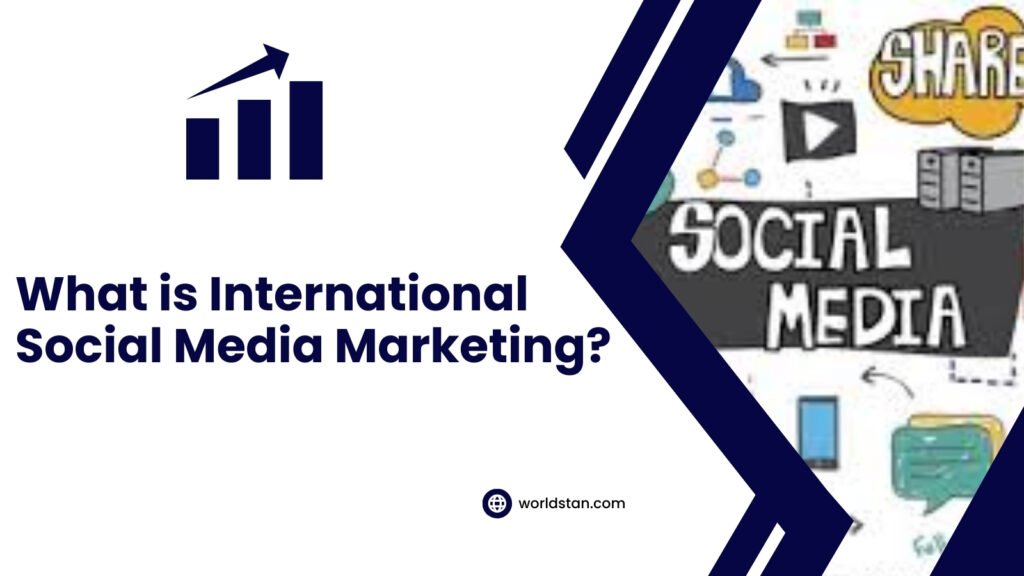Table of Contents
Toggle
What is International
Social Media Marketing?
International social media marketing is a strategy to promote products, services, and brands to people all over the world using social media platforms. This type of marketing focuses on the cultural differences, preferences, and online habits of people in various regions. It involves using popular social media platforms specific to different areas, like VKontakte in Russia or WeChat in China, and not just translating content but making it relevant to local audiences.
Benefits of Global Social Media Marketing
1. Expanded Reach
The internet connects the whole world, allowing businesses to:
- Enter new markets in different countries and regions.
- Meet the needs of various consumers.
- Create a global presence and tailor their offerings for different markets.
2. Increased Revenue Opportunities
Reaching out to new audiences in different regions helps businesses:
- Diversify their income sources.
- Reduce dependency on a single market.
- Increase sales and protect against economic problems in specific areas.
3. Cultural Insights and Adaptation
Understanding different cultures helps businesses:
- Customize their products and marketing strategies for local audiences.
- Go beyond translation to create relevant products and campaigns.
- Build stronger connections by addressing local needs and values.
4. Real-Time Feedback and Analytics
Social media provides instant feedback, enabling businesses to:
- Evaluate campaign performance immediately.
- Adjust and improve campaigns quickly.
- Identify which regions respond better to certain products or campaigns.
5. Increased Brand Loyalty
Engaging with customers in their native language and understanding their culture helps businesses:
- Make content more relatable.
- Build deeper connections with customers.
- Turn casual customers into loyal brand supporters.
6. 24/7 Marketing
With a global audience, there’s always someone online. This allows businesses to:
- Maximize exposure by being visible to different parts of the global audience at all times.
- Make the most of every moment.
Components of an International Social Media Strategy
1. Understanding Your Global Audience
To market internationally effectively, it’s essential to:
- Research local cultures and behaviors.
- Segment your audience based on location, language, and cultural preferences.
2. Localization
Localization involves more than translation. It means:
- Adapting content to ensure it’s culturally relevant.
- Changing images, references, and colors based on regional preferences.
- Making sure the message deeply resonates with the intended audience.
3. Selection of Social Media Platforms
Different regions favor different social media platforms. It’s important to:
- Research the dominant platforms in your target countries.
- Customize your approach for each platform.
4. Collaborating with Local Influencers
Local influencers can help build trust with a new international audience by:
- Understanding local customs and language.
- Introducing your brand in an organic and relatable way.
5. Optimizing for Mobile
In many countries, mobile usage is common. Ensure your content and ecommerce platform are mobile-optimized to:
- Enhance user experience.
- Reduce bounce rates.
- Encourage seamless transactions.
6. Understanding Regional Regulations
Stay compliant with local regulations regarding online advertising and data protection, like GDPR in the European Union, to:
- Avoid fines.
- Maintain customer trust.
Tips for Navigating Regional Platform Preferences
1. Understanding Regional Platform Preferences
Different regions have their preferred social media channels. For example:
- In Asia: WeChat in China, Line in Japan, and KakaoTalk in South Korea.
- In Europe: Facebook, Instagram, and VKontakte in Russia.
- In Latin America: WhatsApp and Instagram.
2. Cultural Content Tailoring
Tailor your content to resonate with local cultures by:
- Using appropriate imagery, tone, and humor.
- Considering cultural symbols and colors.
3. Timezone Management
Post at optimal times for different regions by:
- Using scheduling tools.
- Analyzing peak engagement times.
4. Region-Specific Engagement Tactics
Engage with your audience by:
- Using polls and quizzes tailored to regional events and holidays.
- Collaborating with local influencers.
- Celebrating regional holidays.
The Role of Localized Ad Creatives and Influencer Partnerships
Localized Ad Creatives
Localized ad creatives make your content feel familiar and relevant by:
- Tapping into cultural elements.
- Using natural and colloquial language.
- Tailoring visual aesthetics to regional preferences.
Influencer Partnerships
Local influencers help bridge cultural gaps by:
- Providing credibility and trust.
- Understanding regional dos and don’ts.
- Engaging their audience effectively.
- Adding authenticity to your brand.
